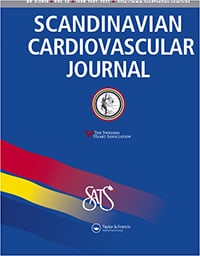Glucose and high-sensitivity troponin T predict a low risk of major adverse cardiac events in emergency department chest pain patients

Background
Glucose is emerging as a biomarker for early and safe rule-out of acute myocardial infarction in emergency department (ED) chest pain patients. We evaluated the diagnostic accuracy of dual testing with high sensitivity TnT (hs-cTnT) and glucose for prediction of major adverse cardiac events (MACE) within 30 days.Methods
This was a secondary analysis of a single-center prospective observational study of 1167 ED chest-pain patients with hs-cTnT and glucose testing at presentation (0 h), and hs-cTnT 1 h later. We tested the addition of glucose <5.6 mmol/L to three MACE rule-out strategies: hs-cTnT <5 ng/L, ≤14 ng/L or a 0 h/1h algorithm, i.e. initial hs-cTnT <12 ng/L with a 1 h change of <3 ng/L. We also tested the addition of glucose ≥11mmol/L to three rule-in strategies: hs-cTnT ≥52 ng/L, a 1 h change ≥5 ng/L or hs-cTnT >14 ng/L. The outcomes were 30-day MACE and 30-day MACE without UA.Results
Two dual-testing approaches reached our target NPV for rule-out: A 0 h hs-cTnT ≤14 ng/L and glucose <5.6 mmol/L identified 252 patients (24.4%) with a 98.8% NPV for 30-day MACE and 99.6% for MACE without UA. The 0 h/1h hs-cTnT algorithm combined with glucose identified 240 patients (23.2%) with a 99.2% NPV for 30-day MACE and 100.0% for MACE without UA. No dual rule-in strategy performed better than using hs-cTnT alone.Conclusions
A combination of hs-cTnT and blood glucose at presentation can be used to identify almost ¼ of ED chest pain patients with a very low risk of 30-day MACE where further testing is not needed. Adding glucose did not improve the rule-in of 30-day MACE.
Pontus Olsson, Ardavan Khoshnood, Arash Mokhtari, Ulf Ekelund
2021
Scandinavian Cardiovascular Journal, 55(6):354-361
